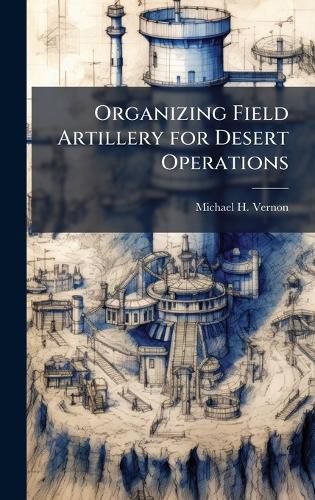Readings Newsletter
Become a Readings Member to make your shopping experience even easier.
Sign in or sign up for free!
You’re not far away from qualifying for FREE standard shipping within Australia
You’ve qualified for FREE standard shipping within Australia
The cart is loading…






This study examines the organization for combat of U.S. Army field artillery units operating in a desert environment and determines the adequacy of current doctrine to insure effective field artillery support to U.S. Army heavy divisions conducting combat operations in the desert. An historical analysis of desert operations by the British and U.S. Army forces in North Africa in World War II is presented, and the lessons learned in these actions are examined in light of AirLand Battle doctrine. The study also discusses centralized and decentralized control of field artillery units and examines the differences presented on today's battlefield by the meshing of offensive and defensive operations as exemplified by the AirLand Battle concept outlined in Field Manual 100-5, Operations. The study concludes that current doctrine is adequate to support organizing field artillery for combat operations on the AirLand Battlefield. The main problem is in the interpretation of current doctrine based on offensive or defensive operations. The author concludes by stating that to be successful, field artillery units must be organized to provide immediate close fires from field artillery battalions organic to maneuver brigades. The requirement to provide massed fires must be met by the field artillery brigades and battalions from the corps artillery
This work has been selected by scholars as being culturally important, and is part of the knowledge base of civilization as we know it. This work was reproduced from the original artifact, and remains as true to the original work as possible. Therefore, you will see the original copyright references, library stamps (as most of these works have been housed in our most important libraries around the world), and other notations in the work.
This work is in the public domain in the United States of America, and possibly other nations. Within the United States, you may freely copy and distribute this work, as no entity (individual or corporate) has a copyright on the body of the work.
As a reproduction of a historical artifact, this work may contain missing or blurred pages, poor pictures, errant marks, etc. Scholars believe, and we concur, that this work is important enough to be preserved, reproduced, and made generally available to the public. We appreciate your support of the preservation process, and thank you for being an important part of keeping this knowledge alive and relevant.
$9.00 standard shipping within Australia
FREE standard shipping within Australia for orders over $100.00
Express & International shipping calculated at checkout
Stock availability can be subject to change without notice. We recommend calling the shop or contacting our online team to check availability of low stock items. Please see our Shopping Online page for more details.
This study examines the organization for combat of U.S. Army field artillery units operating in a desert environment and determines the adequacy of current doctrine to insure effective field artillery support to U.S. Army heavy divisions conducting combat operations in the desert. An historical analysis of desert operations by the British and U.S. Army forces in North Africa in World War II is presented, and the lessons learned in these actions are examined in light of AirLand Battle doctrine. The study also discusses centralized and decentralized control of field artillery units and examines the differences presented on today's battlefield by the meshing of offensive and defensive operations as exemplified by the AirLand Battle concept outlined in Field Manual 100-5, Operations. The study concludes that current doctrine is adequate to support organizing field artillery for combat operations on the AirLand Battlefield. The main problem is in the interpretation of current doctrine based on offensive or defensive operations. The author concludes by stating that to be successful, field artillery units must be organized to provide immediate close fires from field artillery battalions organic to maneuver brigades. The requirement to provide massed fires must be met by the field artillery brigades and battalions from the corps artillery
This work has been selected by scholars as being culturally important, and is part of the knowledge base of civilization as we know it. This work was reproduced from the original artifact, and remains as true to the original work as possible. Therefore, you will see the original copyright references, library stamps (as most of these works have been housed in our most important libraries around the world), and other notations in the work.
This work is in the public domain in the United States of America, and possibly other nations. Within the United States, you may freely copy and distribute this work, as no entity (individual or corporate) has a copyright on the body of the work.
As a reproduction of a historical artifact, this work may contain missing or blurred pages, poor pictures, errant marks, etc. Scholars believe, and we concur, that this work is important enough to be preserved, reproduced, and made generally available to the public. We appreciate your support of the preservation process, and thank you for being an important part of keeping this knowledge alive and relevant.